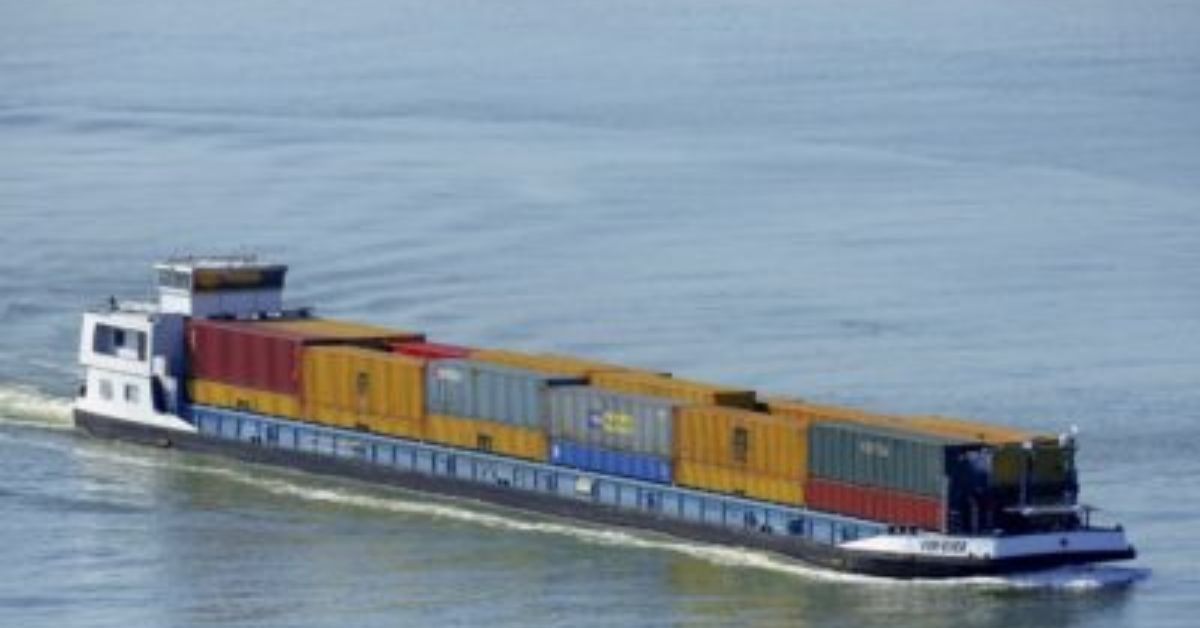The Bangladesh Inland Water Transport Authority (BIWTA) has said the Sultanpur river port in Rajshahi’s Godagari upazila will start operation on 12 February with a shipment of cotton to Maya port in India’s Murshidabad.
The water transport authority hopes to reduce the cost of importing goods from India using this trade route.
“The primary purpose of opening this port is transporting goods between the two countries via waterways. Shipping Minister Khalid Mahmud Chowdhury is scheduled to inaugurate the Sultanpur port and the commencement of goods transportation through this route on 12 February,” said Rajshahi Deputy Commissioner Shameem Ahmed.
“A small ship carrying two tons of cotton will depart from Sultanpur port to Maya port on the day of the inauguration, with the return cargo from India to be confirmed in the next couple of days,” he added.
A control place has already been established at the port ahead of the inauguration, in addition to an approach for the direct loading and unloading of goods onto ships, said BIWTA’s Assistant Engineer Shah Alam.
He also said the shipping minister may announce potential infrastructure improvements on launch day.
BIWTA said the distance between Sultanpur and Maya port is only 20 kilometres.
It also informed there was an initial approval for a 61-kilometre waterway from Rajshahi to West Bengal’s Dhulian. The route was extended to Aricha, making the route 272 kilometres long.
The route will facilitate the movement of vessels with low navigability. Sultanpur and Maya have been declared ports of call.
The authority also said the benefits would be realised if the 272-kilometre protocol route can be operationalised.
Although the navigability crisis in the Padma river has prevented its activation, the Sultanpur-Maya route can facilitate bilateral trade between both countries throughout the year, primarily enabling the import of stone and saving both costs and time.
BIWTA said the domestic stone sources cannot meet even 5% of the demand required for the country’s infrastructural development.
Therefore, a significant amount of stone needs to be imported from abroad, especially from the UAE, Vietnam, Oman, Thailand, Malaysia, and India.
Importing stone via mother vessels from these countries costs about $20 per metric ton.
However, importing stone from India through some land ports via C&F costs $13 per metric ton. The infrastructure weaknesses of these land ports and the priority given to importing food and other goods make it impossible to import the required amount of stone to meet the demand.
Despite sending LCs, the importers must wait for a month and a half just to get an available slot for stone import. Therefore, they need to import stones from other countries in foreign currency at twice the cost.
With this waterway, it will be possible to import stone and transport it in domestic currency at a cost of only $9-$10 per metric ton. This will save foreign currency and create employment opportunities for many in Bangladesh.
According to BIWTA, 3.5 crore metric tons of stone amounting to $691.08 million were imported through Chattogram and other seaports within just two and a half months from 1 March to 10 May last year.
BIWTA expects import of stone through the Sultanpur-May waterway route could save half of the mentioned US dollars, resulting in reduced construction costs of various government projects and decrease the pressure on the foreign currency reserves.
Rajshahi City Corporation Mayor AHM Khairuzzaman Liton said, “This waterway stretches from Dhulian in India’s Murshidabad to Sultanpur is Rajshahi’s Godagari, and up to Aricha.
“India and Bangladesh, especially India, are interested in trading through this waterway. They want to trade through this route to easily deliver goods to the seven provinces of Northeast India through Bangladesh,” he added.
“The ports of Dhulian and Maya in India’s Murshidabad have been fully prepared. A pontoon [flat-bottomed boat] has been brought to Sultanpur. It will be officially inaugurated on 12 February. A trial will be conducted with five vessels.
“Gradually, the navigability of the river will be increased through dredging. A new port is being established to the west of Rajshahi,” the mayor said.
He added, “During the monsoon season, it will be possible to transport 2,000-2,500 tons of cargo. In the dry season, it will be around 700 to 800 tons. India and Bangladesh are very interested and sincere about this. As a result, the people of the Rajshahi-Nawabganj region will advance towards economic prosperity.
“Importing hundreds of thousands of tons of stone from India by road and train costs more. If it is possible to import stone via waterways, the cost will significantly decrease. Additionally, this waterway will play a major role in the economy of Bangladesh,” Khairuzzaman Liton said.








